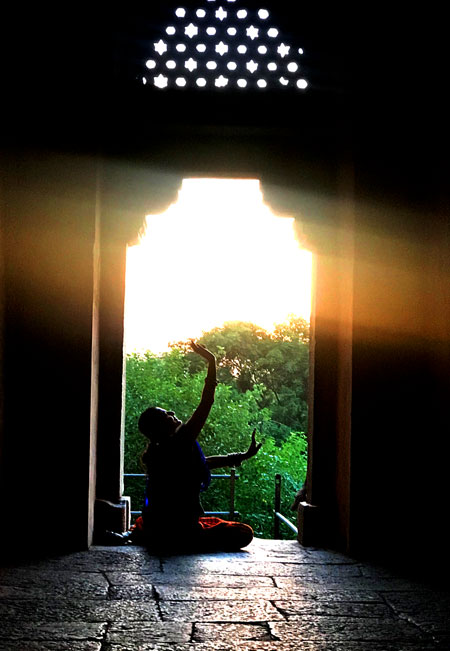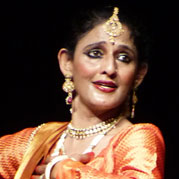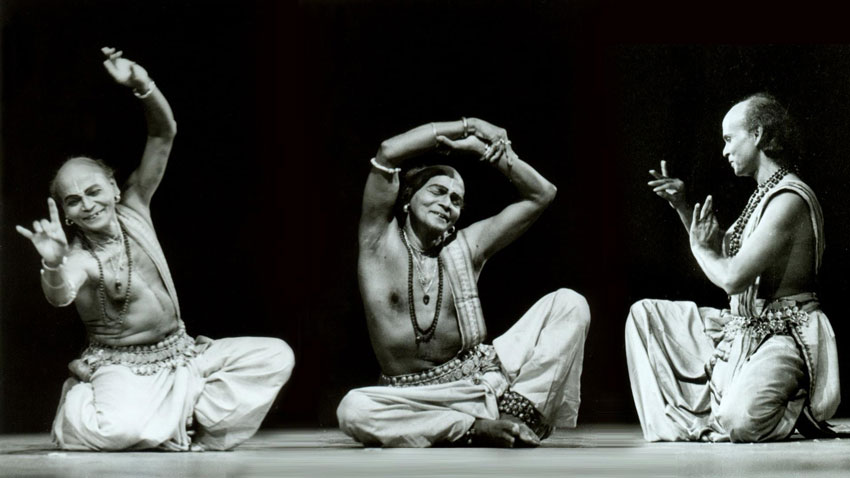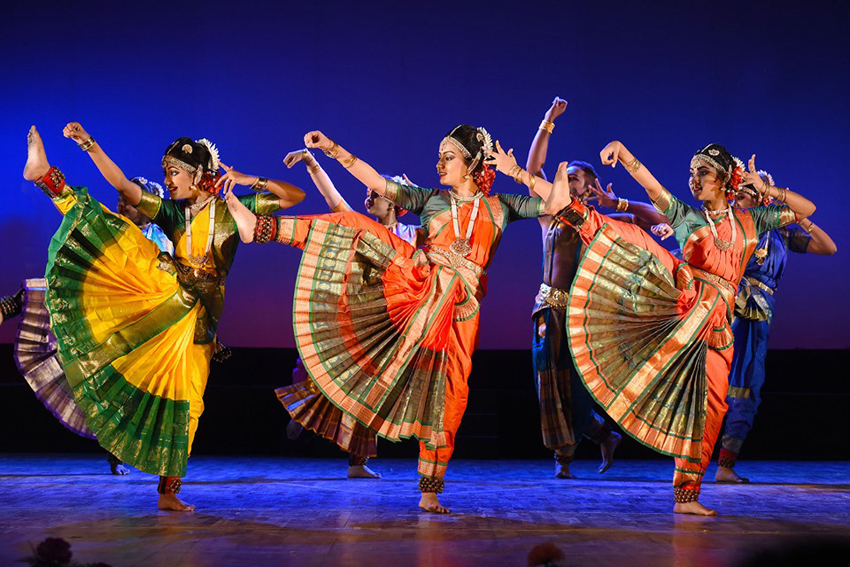In music and dance, images are created in the canvas of time and space. While music uses sound the dancer uses the human body to paint. The rendering of the dynamic images is inspired by what is seen and experienced by the performer. The second aspect of the image-making by Indian performing artists who project designs on the canvas of Time and Space reflects a complex heritage of micro mathematics. The concept of Yati is one such principle. Several scholars and performers both in the North and the South have spoken and written about Yati. However, this article links the idea of Yati with dance photography and social media on the one hand and on the other hand, it brings the view of the legendary and holistic performing artist – Pandit Biju Maharaj explaining the complex concept in a video.
Comprehending layers of any art form revealed in my 10-year research on Kathak, related performing arts and socio-economics of the art in urban towns showed the importance of the concept of Yati that reflected a unique heritage of Mathematics in the Indian Performing Arts.
Pt. Birju Maharaj Defines – “Yati are formations that capture designs and rhythms both natural and manmade.”
Technically speaking, Yati is part of the science of rhythm in Indian Dance and Music which is patterned and designed on the canvas of Time and Space. The patterns are formed using the mnemonic syllables called bols. Yati is an organization concept which is prevalent both in the Northern and Southern Indian systems of music and in Kathak dance. Different lengths of Mnemonic syllables are organized and woven in time-cycles or talas. There are five major designs:
- Sama – where phrases of a particular composition are organized in equal length.
- Gio- Puccha – (Cow’s tail) – the organized phrases are patterned from long to short.
- Strota Gata (or Strot Vaha) – Is opposite to Go- puccha. The patterned phrases begin short (say from a spot) and then gradually expand.
- Mridanga or barrel drum where the pattern of phrases is designed as short, long, short.
- Pipilika or the shape of an ant where phrases are designed as long, short, long.
Creating the World
 A dancer or a musician does not live in isolation but is an integral part of the environment around him or herself. In this context, the article takes one illustration to re-work aesthetics of Dance.
A dancer or a musician does not live in isolation but is an integral part of the environment around him or herself. In this context, the article takes one illustration to re-work aesthetics of Dance.
Pandit Birju Maharaj says, “The arch in the architecture of a building is an example of strotgata. It originates from a single point and expands and flows down.” The sound patterns in music and body movements in dance reflect the mathematical designs created evocatively and meditatively to produce the idea of beauty and balance.
The trend of Dance Videos and Photography against Built Monuments
It was in the late 1970s and early 1980s that modality of Festivals of Dance and Music against Heritage Sites began in India. These include that of the Chidambaram temple in Tamil Nadu, Khajuraho temples in Madhya Pradesh, and later in the vicinity of the Konarak Sun temple in Odisha and the grand Taj Mahal. The festivals gained great popularity, and even today dancers vie for performing in the festivals. The main objective of the festival was cashing on the intrigue of the heritage sites for increasing tourism.
While the beautiful dancing sculptures on Temples, on the one hand, the dual attraction of geometrical forms and the echoes of romance, the luxury of designs and lifestyles, on the other hand, inspire dancers to recreate their art in front of the heritage buildings. Next, these visuals are frozen as videos and photographs and post on Social Media.
Heritage and Natural Sites, Dance and Social Media
This trend has rapidly expanded. The symbol of the Gandharva and Apsaras (celestial dancers and musicians) populate Facebook, Instagram and Twitter. However, the point of argument in this article brings to fore that a dancer must consider that each photograph and video acts as an advertisement not simply to capture the alluring beauty of the performer but to project the talent of the performer, and to communicate his or her grip on the knowledge of their dance form. Hence, it is important that while choosing the background of a heritage site or nature, the dancers need to reflect. Their commentary to match the visual must mirror their knowledge, their talent by bringing concepts, scientific aesthetics of their respective dance form or the music with the chosen background. Poetic imagination of being inspired by background is only one part, being a calendar art image another if just that occurs only an exotica is created. If a context is expressed a discourse is raised.
Watch Pandit Birju Maharaj on the concept YATI in the video:











1 thought on “Aesthetics of Mathematics & Lure of Social Media in Indian Dance”
Very nice information about Yati. Thanks a lot Maharaj ji.